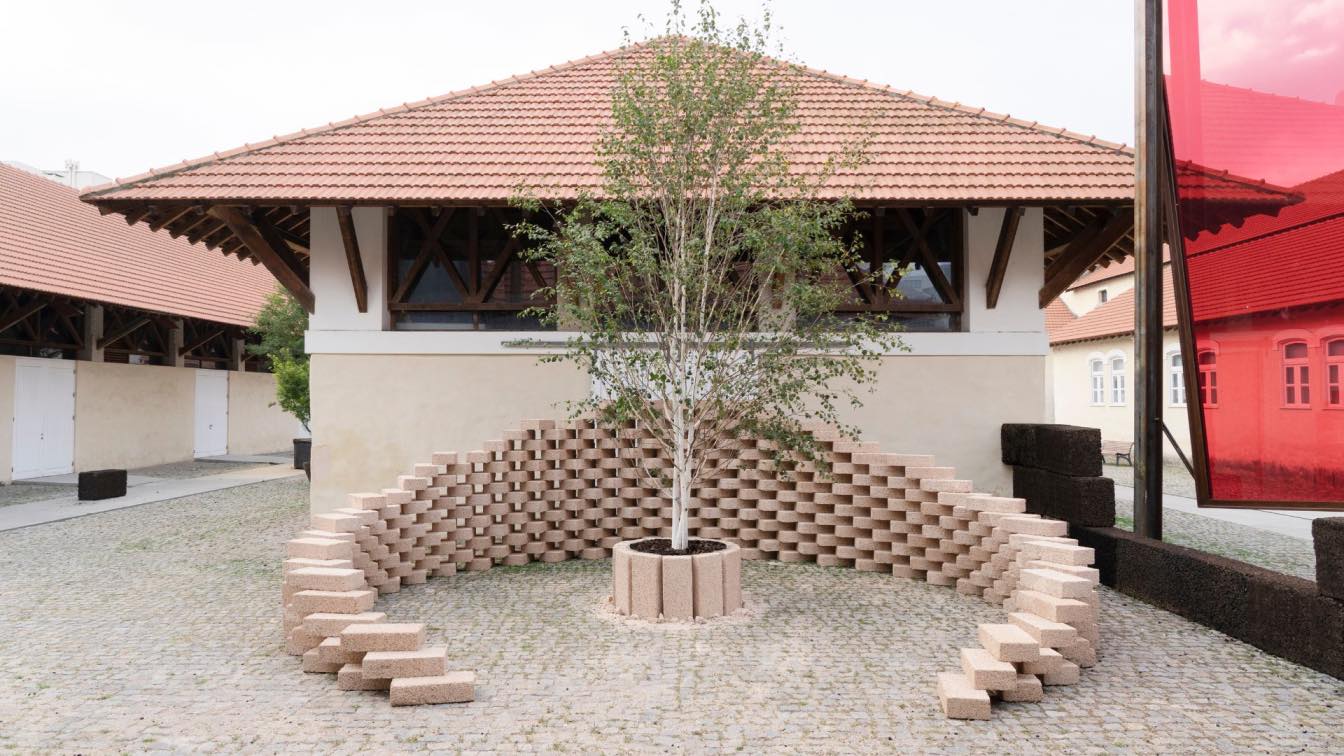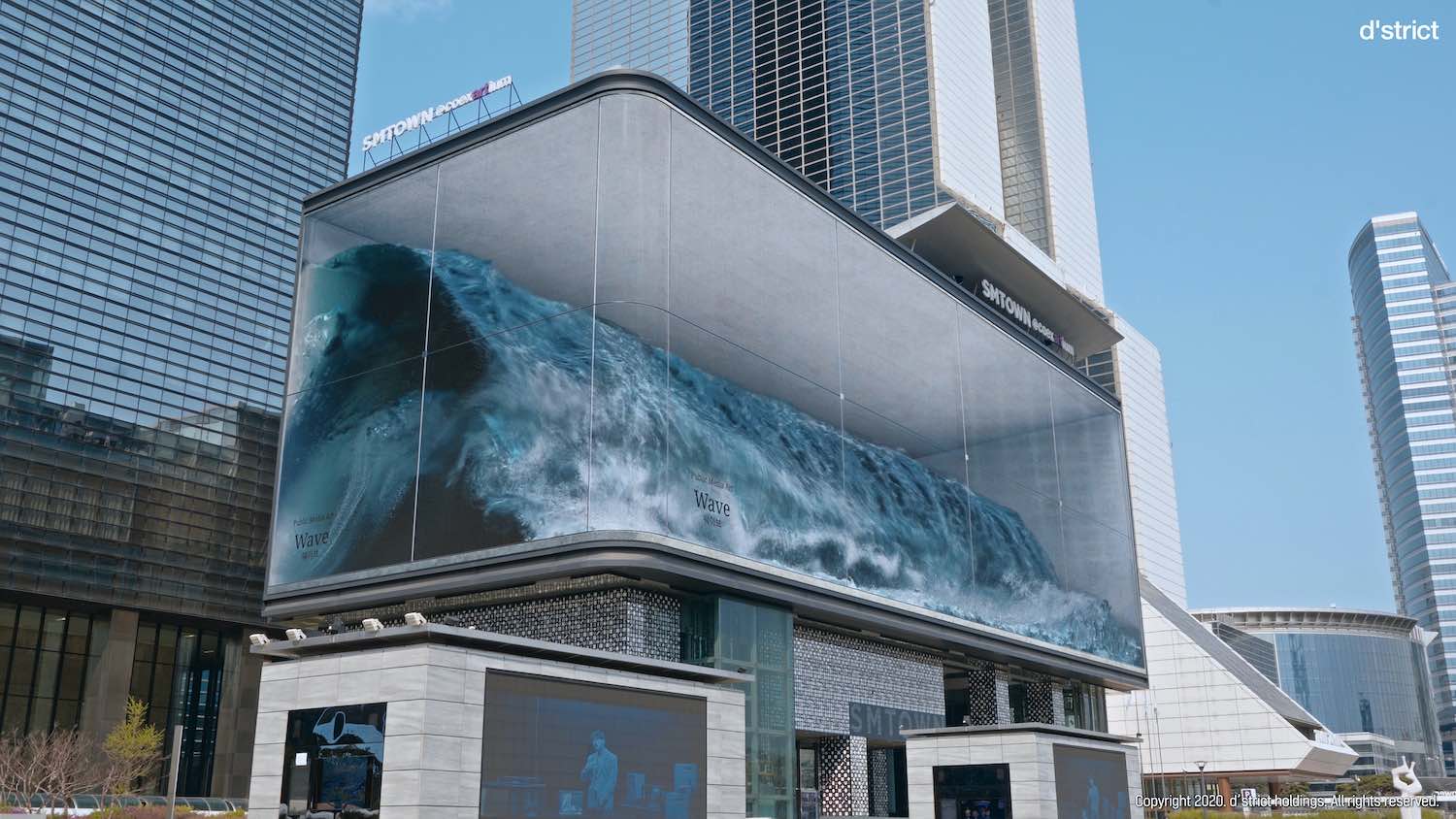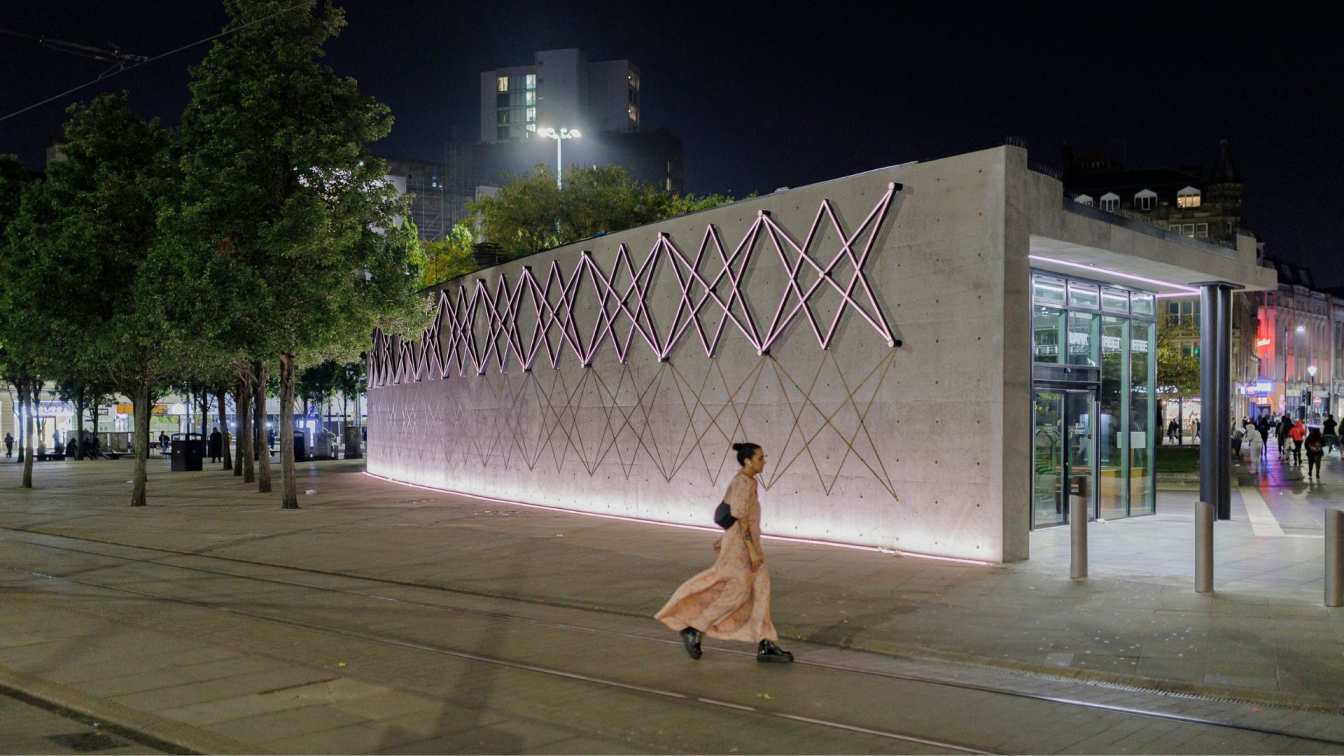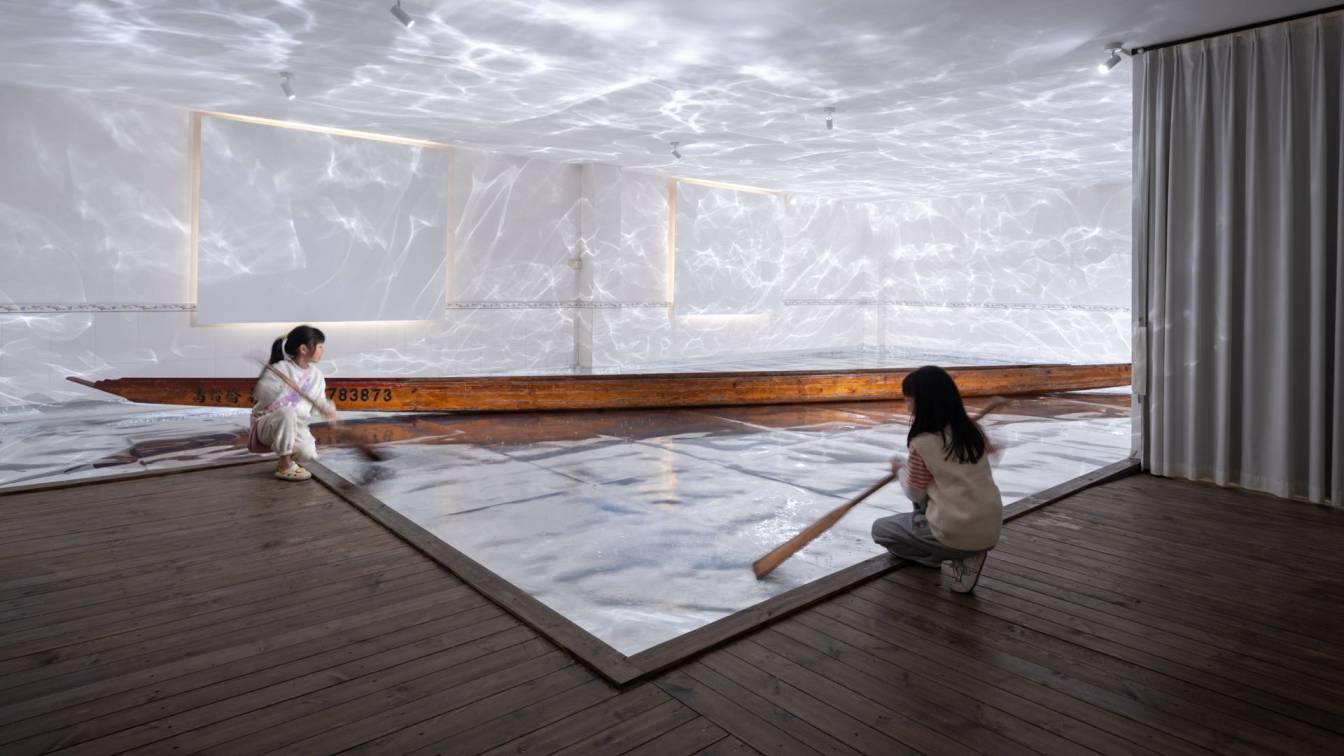On the occasion of the second edition of Build - From High Tech to Low Tech, a fair held last September at Casa da Arquitectura in Porto, Park Associati was invited to design and build a pavilion to enhance the role that bio-based materials play in the future of architecture. The structure, entirely assembled dry and designed to be quickly disassembled, aimed to explore the structural and aesthetic potential of hempcrete and how a parametric approach can enhance the efficiency of the construction process in low-tech applications. Once dismantled, the blocks used to make the installation were shipped to the construction site of a private villa under construction outside Porto.
The design process and assembly.
The pavilion reinterprets the vernacular style of the Pantescan garden, taking the form of a hemp brick semicircle that protects a single plant element, evocatively representing the biosphere. The project concept was entrusted to the Park Plus team and the Design Technology group within the studio. The latter was responsible for the overall geometric layout of the intervention. The installation had to be completed in just a few hours and entirely dry, necessitating the development of a parametrically designed installation method. The template used by workshop participants for self-construction was created in-house with a CNC mill and used on-site to "mathematically" control a process that, due to its inherently low-tech nature, would otherwise have compromised the final result of the work. The progressive rotation of the blocks, which achieves the desired armadillo skin effect envisioned by the designers (hence the name of the installation, "Tatu" – armadillo in Portuguese), was thus executed almost perfectly.

Bio-Based Materials.
Bio-based materials are derived from renewable organic-natural resources such as plants, animals, and microorganisms. They can replace traditional materials in a wide range of applications, including packaging, textiles, consumer goods, and, in our case, products related to the construction industry. The use of this particular type of material in architecture can help reduce the environmental impact of buildings and promote a more responsible approach to the design process.


















Park Associati
Founded in Milan in 2000 by Filippo Pagliani and Michele Rossi, Park Associati focuses on architectural design, urban planning, landscape, interior design and product design.
Park Associati's approach to architecture is analytical, pragmatic and tailored, strong in tradition and at the same time capable of generating new linguistic codes through a process that combines listening, intuition and experimentation. Whether it is the Regione Lombardia skyscraper, the Luxottica or Salewa headquarters, a residential space, a Hermés, Brioni or Canali luxury boutique around the world, the retrofitting of a Milan’s Modernist building or the restoration of an entire neighbourhood, Park Associati sees each project as an opportunity to seek innovative, tailor-made solutions expressed through quality and attention to human beings.





